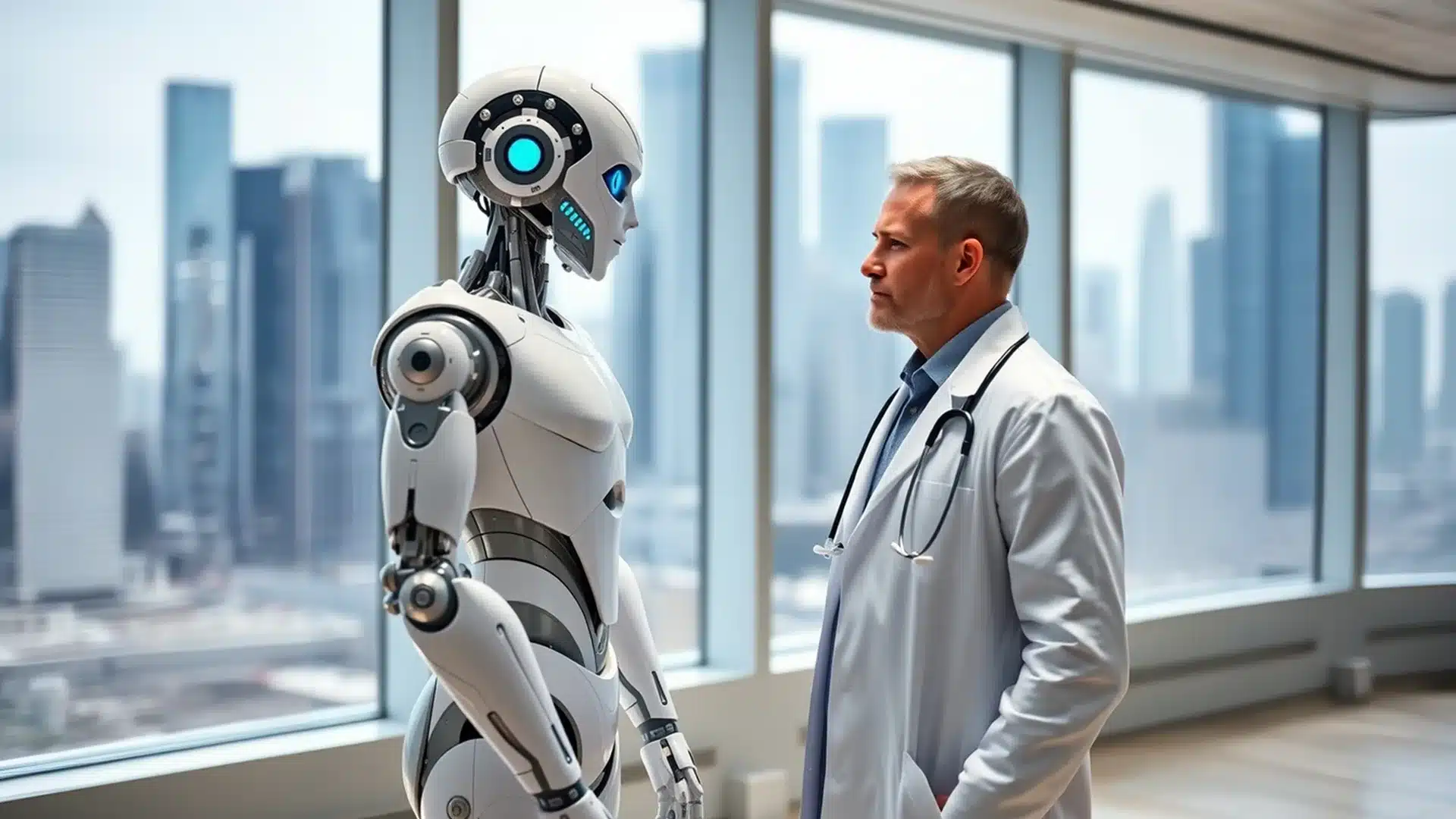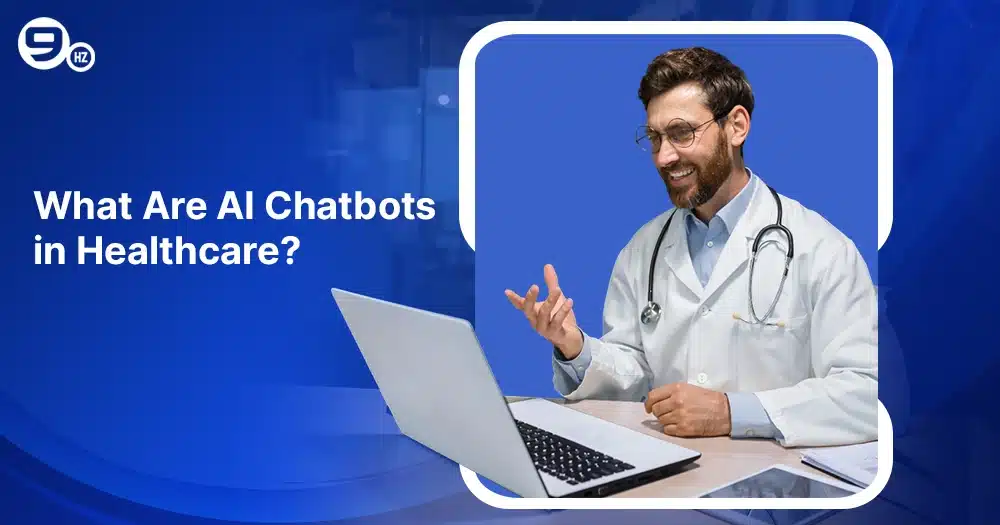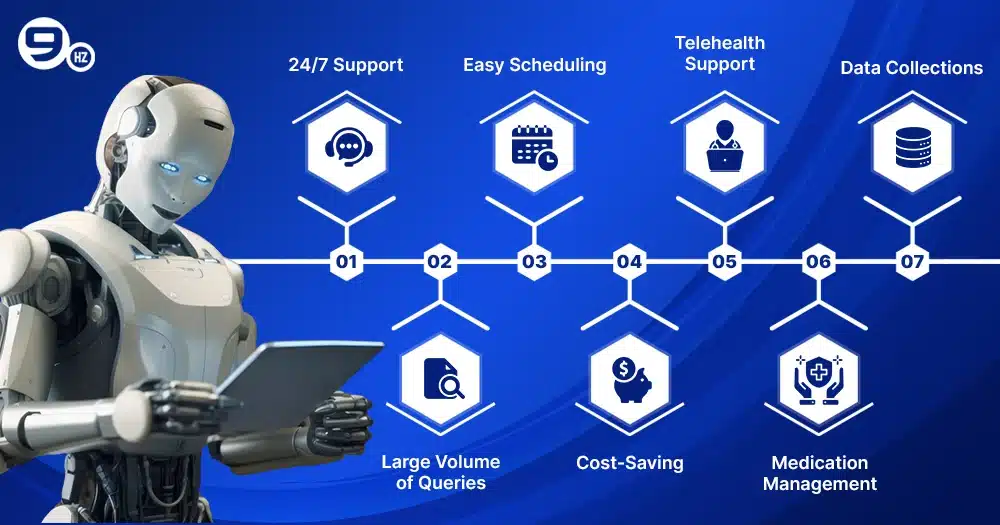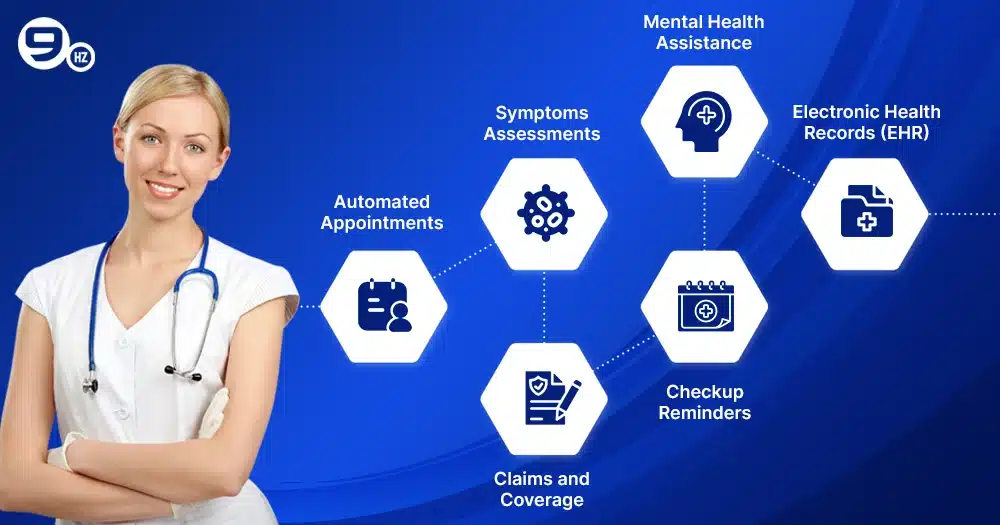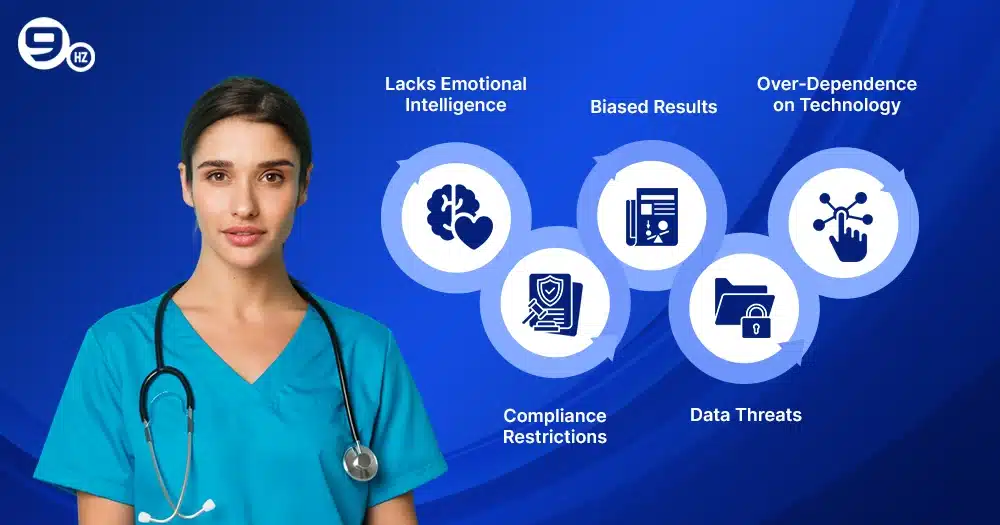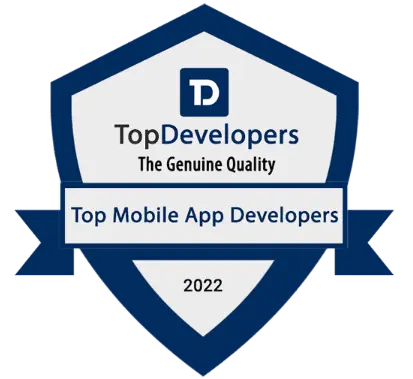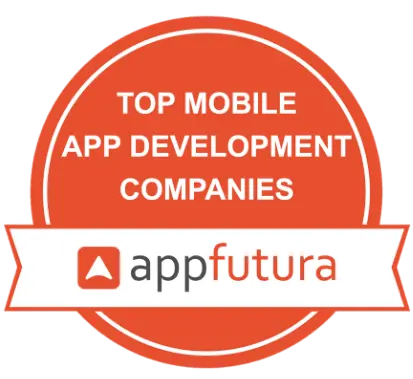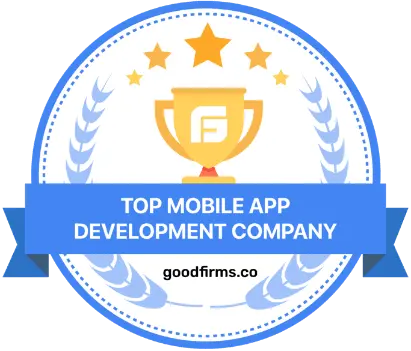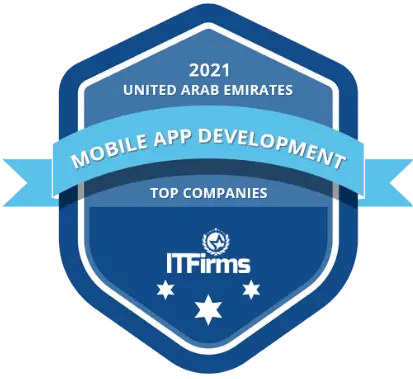Innovation is leading the world with technology, and coincidentally, it is also dealing with the global health challenges of COVID-19, malaria, tuberculosis, heart diseases, diabetes, and mental illness!
From artificial intelligence to 3D bioprinting, technology has reshaped the medical field, innovated, and transformed how hospitals work, doctor’s practices, and research laboratories. One remarkable tech for healthcare is virtual assistants and AI-powered conversational chatbots. Overall, the global healthcare chatbots market will grow by 14.5% from 2019 to 2026 to reach $345.3 million. AI-powered healthcare chatbots can not only resolve queries but also deliver personalization and support 24 hours a day, and they can improve overall customer experiences.
The healthcare industry does not remain the same now; you will find self-service tools and users interacting through websites, kiosks, and medical chatbot solutions for assistance. Here is a well-defined blog structure for showing use cases of chatbots in healthcare, core features, and how much it costs to develop an AI chatbot.
There are many benefits of developing your own custom chatbot in healthcare. Because, every chatbot performs different tasks. If you develop your own custom chatbot, then you can get it built as per what you want and what suits your business. If you want to develop your own custom chatbot, you can connect with an AI chatbot development company. They can help you build the chatbot that you want to build.
What Are Chatbots in Healthcare?
“Hey! I’d like to schedule an appointment with Dr. Johnson.”
(A simple prompt like this will begin your interaction with the chatbot; it’s that simple)
Chatbots in healthcare are designed using advanced technology such as artificial intelligence, ML, NLP, algorithms, datasets, and voice processing. Considering healthcare expertise, the core purpose of developing chatbots is to provide real-time interaction with users through text and voice communications. By deploying machine learning and automation algorithms, it can answer inputs within seconds.
Suppose, in case of emergency, you are required to enquire about basic details for hospitals and save your valuable time by staying back in the queue. Healthcare chatbots have overcome these issues with round-the-clock assistance to share key details, schedule appointments, time slots, and doctor information to handle critical issues.
As these healthcare chatbots are integrated with centralized data records, they help share the best care for patients by studying their medical history, patient preferences, and previous consultancies. Some examples of chatbots are OneRemission, Sensely, Buoy Health, SmartBot360, GYANT, Healthbot, Youper, Florence, and Healthily.
Let’s have a look at how this AI-powered chatbot in healthcare set up advanced solutions that traditional rule-based chatbots:
| Feature | Rule-based Chatbots | Conversational AI Interfaces |
|---|---|---|
| Task | Focus on Navigation | Dialog-focused |
| Adaptation | Limited adapting to learning and depends on training | Continuous learning and focus on improving over time using machine learning |
| Personalization | Generate basic responses | Generate personalized responses after assessing users’ preferences |
| Complexity of Interactions | Handles linear and predictable queries | Handles complex and multi-turn conversations |
| Input Data | Not able to directly process unstructured data | Can convert unstructured data with NLP to share the right responses |
| Language Understanding | Pre-written and scripted responses with limited context understanding | Uses advanced Natural Language Processing to respond with context |
| Response | Predefined responses with limited flexibility | Generates dynamic responses |
| Deployment | Trained for only specific queries | More flexible and integrated with multiple healthcare settings |
Benefits of Chatbots in Healthcare
Integrating a healthcare chatbot will not only improve patient interaction but also create continuous personalized communication. It has set up a paradigm shift to elevate healthcare delivery and improve patient experiences. The benefits of chatbot technology in healthcare are evident in its ability to enhance efficiency, streamline communication, and provide real-time support. Here is the list of benefits of medical chatbot solutions to deliver support to the medical domain.
24/7 Support
Emergency is part of the health ecosystem! AI-powered chatbot in healthcare can fulfill critical aspects by offering 24-hour support. It is valuable to provide instant responses and guidance to ease health management during non-working hours. It will reduce unnecessary hospital visits and deliver a flexible support mechanism.
Large Volume of Queries
Chatbots for healthcare have been developed to handle more than 1000 queries at a time, so patients do not have to wait long to access support services. It adds value to clinic reputations and maintains integrity among patients visiting. It can be in the form of live chat, FAQs, or Whatsapp chatbots.
Easy Scheduling
What can be better than hassle-free appointment scheduling or rescheduling and canceling? AI-powered Chabot in healthcare is constructed in a way that provides simple and conversational interfaces. It can minimize administrative loads and reduce the chances of missed appointments to improve efficiencies.
Cost-Saving
Healthcare Chatbots can significantly save additional costs through automated routine administration tasks. From initial consultations or appointment management to requesting medical records, it can ease critical and complex tasks. As a result, there will be less involvement of resources, infrastructure, and in-person visits.
Telehealth Support
Healthcare chatbot is backed by an AI-driven program to bridge the gap for patients and healthcare service providers. Doctors and health institutions use the system to divert users opting for services for live chat, email, phone calls, streaming media, store imaging, and video conferencing.
Medication Management
It can facilitate prescribing the right medication information to customers, updating medication schedules, uploading reports to central data records, and sending timely reminders. Although medicines are subject to expertise, healthcare chatbots can share basic information, track symptoms, and send refill reminders.
Data Collections
Healthcare systems can’t rely on manual processes if they are required to handle more than 100 patients. Chatbots are coming up as data power to use patient data to predict health risks and prepare customized treatment plans. Also, it supports predicting trends and identifies patterns for health risks.
Use Cases of Chatbots in Healthcare
Traditional chatbots are rule-based and share responses to only specific queries or commands. However, chatbot in healthcare uses natural language and advanced algorithms to add more personalization and suggest responses after analysis and assessments.
Babylon Health, Sensly, Buoy Health, or MedWhat are used for medical consultations and health assessments to track diseases. You can use ADA Health, Healthtap, KHealth, or PactCare- an AI-powered chatbot for healthcare that can benefit personalized health assessments!
Let’s discuss common use cases of healthcare chatbots:
Automated Appointments
Chatbots for healthcare can make scheduling appointments easy and faster. Users can enter personal details, select the ideal lab or health facility, book a time slot, and schedule a hassle-free onboarding. Additionally, a chatbot can sync with Outlook, EHRs, and Google Calendar to facilitate registration and appointment reminders.
Symptoms Assessments
AI-powered chatbots in healthcare can be trained to assess clinical symptoms quickly and suggest instant diagnoses using possible remedies. It can measure the severity of pain and distress using medical algorithms on multiple scales to take on possible conditions. This helps healthcare centres save time and visit only for urgent care.
Claims and Coverage
Hustling with documentation and paperwork can extend the process of medical claims. Healthcare Chatbots can assist in wrapping up filing claims, checking for coverage, verifying details, and tracking status. It simplifies pre-authorized billing, patient requests, and finding the right hospital.
Mental Health Assistance
With growing mental health awareness, patients prefer to connect with experts virtually. Healthcare Chatbots work on a 24-hour model, and users can access meditation tips, affirmations, or exercises for self-care. It helps users to break down the stigma of connecting with patients, and they can easily recognize their emotional patterns.
Checkup Reminders
Physical health is all about frequent checkups, whether you have mild or severe diseases. Automated reminders can send details via WhatsApp or email to patients so that they do not miss important tests, vaccinations, or medications. Reminders can be weekly or monthly for easing scheduling or rescheduling to sync with Google Calendar.
Electronic Health Records (EHR)
Chatbot helps healthcare providers collect patient information on their medical symptoms, health patterns, or medicines. It can prepare a centralized medical record to update real-time details, providing benefits for diagnosis and treatment plans. However, following GDPR or HIPAA compliance, it can securely handle patient data.
Real-World Examples of Healthcare Chatbots
AI-powered Chatbots are getting smarter with algorithms, live chat features, voice assistance, and interactive user interfaces. Healthcare companies are actively investing in integrating chatbots to assist in patient management, provide valuable information, stay updated, and automate processes.
Babylon Health (Acquired by eMed Healthcare)
It is a popular digital healthcare company that develops AI-powered chatbots and telemedicine services. Using chatbots, they can deliver better symptom checking, medical assessments, and health checkups for AI algorithms. This made it ideal for 24-hour consultations to help patients with check-ins and connections for telemedicine services.
Symptomate
It is an AI-powered symptom checker in which a healthcare chatbot asks follow-up questions to diagnose. Using medical data, it can list medical conditions and provide checkups and health assistance. This can support a multi-language support chatbot that instructs patients on health, generates reports, and suggests lab testing.
Woebot
It is a USA-based mental health chatbot that is designed for sharing emotional support to overcome anxiety and depression through CBT (Cognitive-Behavioural Therapy). It facilitates a self-help tool with mood tracking, progress reflections, and mindful practices. Users can freely express their mental convern without any hesitation or judgment.
SmartBot 360
It is an AI & NLP-powered chatbot made with a three-tier architecture to respond to queries, SMS follow-ups, quizzes, email verification, custom integrations, and pre-visit checkups. It helps companies with structured patient management, deriving insights, and lead generation.
Florence
It is a virtual health assistant acting as a virtual nurse to support users by reminding them to take medicines, tracking their health metrics, and allowing users to log symptoms and weight. Chatbot interface has the simple interface of social media apps like WhatsApp, Telegram, or Facebook messengers supporting multiple language preferences.
Challenges of AI Chatbots in Healthcare
Despite having a series of benefits and versatile implications, healthcare AI chatbots are navigating under certain limitations. Chatbot development companies should focus on these key points to improve scalability and add more features. Here are the following limitations connected to AI Chatbots:
Lacks Emotional Intelligence
Chatbots can be trained for faster responses but still fall short of an emotional, conversational tone to show empathy and morality like humans. It might make it unfit for sensitive patients and unable to calm patients that are required for that moment.
Compliance Restrictions
Healthcare chatbots handle patients’ crucial information, so they should comply with regulatory requirements such as the Health Insurance Portability and Accountability Act, ISO 27001 & 27701, GDPR (General Data Protection Regulation) or other security measures. Otherwise, they will pose limitations when expanding to other sub-departments.
Biased Results
If the chatbot is dealing with outdated data, there might be the risk of showing irrelevant and inaccurate details that can impact patient management. It would be a major limitation, so chatbot for healthcare should be optimized for auto-update or extended data accessibility measures.
Data Threats
Like any other tech, as AI chatbot advances, it is subject to attacks with malware, viruses, and other vulnerabilities. There is a certain risk of losing data and leading to security incidents for phishing attacks. With the help of robust data handling, encryption, and security protocols to minimize the risk.
Over-Dependence on Technology
Users can access chatbots using devices and stable internet connections. However, it still does not work offline, so overreliance on technology might cause challenges due to downtime or slow-loading functions. Also, it requires regular updates to work on security patches.
What Is Healthcare Chatbot Development Cost?
| Components | Basic Chatbot (Rule-Based) | Moderate Chatbot (AI + NLP) | Advanced Chatbot (AI + ML + Voice) |
|---|---|---|---|
| Requirement Analysis & Planning | $1,000 – $3,000 | $3,000 – $5,000 | $5,000 – $8,000 |
| UI/UX Design (Chatbot Interface) | $2,000 – $4,000 | $4,000 – $8,000 | $8,000 – $15,000 |
| AI & NLP Integration (Conversational AI) | $0 (No AI) | $5,000 – $15,000 | $15,000 – $30,000 |
| Chatbot Logic & Development | $5,000 – $10,000 | $10,000 – $25,000 | $25,000 – $50,000 |
| Backend & API Integration (EHR, CRM, etc.) | $0 – $5,000 | $8,000 – $20,000 | $20,000 – $40,000 |
| Multi-language & Voice Support | No | Limited ($5,000 – $10,000) | Full ($10,000 – $20,000) |
| HIPAA & Data Security Implementation | $2,000 – $5,000 | $5,000 – $15,000 | $15,000 – $25,000 |
| Deployment & Testing | $2,000 – $5,000 | $5,000 – $10,000 | $10,000 – $20,000 |
| Cloud Hosting & Server Setup | $1,000 – $3,000 | $3,000 – $7,000 | $7,000 – $15,000 |
| Maintenance & Support (Annual Cost) | $3,000 – $5,000 | $5,000 – $15,000 | $15,000 – $30,000 |
| Total Estimated Cost | $15,000 – $35,000 | $40,000 – $80,000 | $100,000 – $200,000+ |
Have you ever wondered about the complexities of a chatbot or how much it costs to develop one? Development costs vary depending on healthcare system expectations for rule-based chatbots, AI-driven features, or multi-functional chatbots. Companies are using pre-built platforms like Microsoft Bot, Amazon Lex, or Dialog Flow framework to reduce overall development time and cost.
Here is a comprehensive table with an estimation of healthcare chatbot development costs. However, it might depend on features, technology, or design:
How Can Ninehertz Help You With Healthcare Chatbot Development?
Selecting the right healthcare chatbot development company will provide you with a convenient and feature-rich chatbot. Count on NineHertz – the #1 software and app development company with 15 years of expertise to deliver highly secure and scalable mobile apps. It launched over 800 projects and served the healthcare industry with remote patient monitoring, telemedicine, smart apps, and medical chatbots.
Developing AI-powered chatbots will help healthcare providers with comprehensive services such as UI/UX redesign, performance compatibility, cloud integration, technology upgrades, or security enhancements. Connect with NineHertz to develop AI-driven chatbots utilizing emerging technologies such as LIama, PaLM-2, or GPT.
Conclusion
In the last few years, the healthcare industry has witnessed the unfolding of technological advancements, and chatbots have exhibited the fastest mode of communication channels. More than 74% of users prefer chatbots for simple queries, and 52% of patients in the USA receive their health-related data using chatbots. The advent of GenAI for healthcare reshapes the industry with increasing accessibility, 24/7 support, managing queries, and booking appointments. You can expect growing demand for symptom checking, medication reminders, appointments, virtual health assistants, and support chatbots.
To meet this demand, many healthcare providers are now leveraging custom artificial intelligence development services to build secure, intelligent, and scalable chatbot solutions.
Frequently Asked Questions
How do AI chatbots improve healthcare services?
Chatbots for hospitals can help patients access the right information, handle queries, automate tasks, perform symptom assessments, and create medical records. They can also make the system more structured and reduce the administration workload.
Are Chatbots secure for healthcare transactions?
Yes, if AI chatbots are made with data security protocols and follow encryption compliance that keeps chats and patient records protected. Users can complete their transactions without any hesitation or risks.
Which Healthcare companies are using AI chatbots?
Some prominent healthcare companies are Pfizer, Replika, Woebot Health, Cigna, Oscar Health, Sensely, Apollo Hospital, and Mayo Clinic. These companies use chatbots to deliver 360-degree health support and patient engagement.
What technologies power AI chatbots in healthcare?
Here are a few remarkable technologies, such as Natural Language Processing NLP, Machine Learning, Deep Learning, Cloud Computing, Large Language models, and knowledge graphs.
